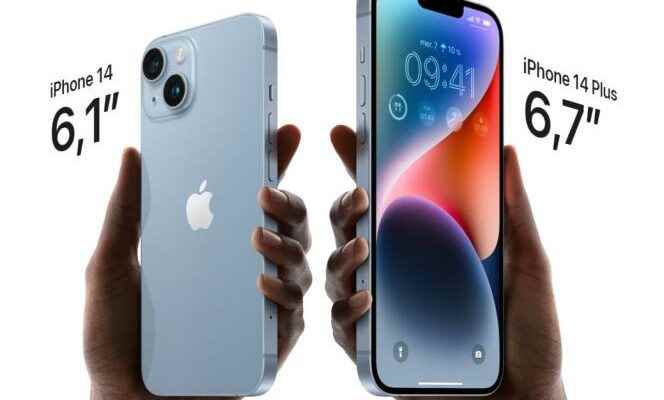For the first time since the Covid-19 crisis, Apple’s announcements took place this Wednesday, June 7 in the presence of an audience gathered in the Steve Jobs Theater, in Cupertino, California. An audience reduced to watching a series of pre-recorded videos, no doubt hoping to attend a conference led by a very real person, present on stage as in the past. It was obviously a question of new products during this conference, but also, and in an unusual way, of a regrettable disappearance.
Apple has indeed not announced a successor to the iPhone 13 mini, its high-end compact smartphone, which will obviously not be replaced. This model was however recommended by many journalists for its pleasant format in the hand, quicker to use than larger models, and particularly suitable for mobile users. But it is true that the iPhone mini offered less good visual comfort to presbyopic users and did not honor the videos. We will regret this excellent compact smartphone whose sales have never reached the volume sold by its big brothers.
- iPhone 14s that progress little
The iPhone mini is replaced by an opposite model, very large, the 14 Plus, whose screen measures 6.7 inches diagonally. It joins the standard iPhone 14 whose screen still measures 6.1 inches. French prices for these models are climbing significantly – 1,020 euros, an increase of 110 euros, and even 1,170 euros for the Plus model. What lead to regret the 810 euros of the iPhone 13 mini.
Especially since the new iPhone 14s sport an unchanged design, and incorporate a processor identical to that of last year. As with almost every new generation, however, the quality of their camera is progressing, at night and indoors. Both iPhone 14 models also become capable of detecting car accidents thanks to a redesigned accelerometer, which allows them to automatically call for help when needed. In addition, they can now communicate with satellites.
- Satellite relief messages
Thanks to new equipment, the iPhone 14s are also capable of sending messages to satellites in white areas where the telephone signal does not pass, which makes it possible to call for help in the event of a health problem, for example. The service is currently reserved for the United States and Canada, where it will be free for the first two years.
Sending a message via satellite will be much less simple than through 4G. You will have to be outside, and point the smartphone in the direction of a satellite by following the graphic indicator displayed on the screen of the mobile, then follow the evolution of the satellite in the sky by gradually tilting the smartphone … then go to the next satellite by repeating the same maneuver. In the best case, if the sky is clear, sending a message will take about fifteen seconds. If the sky is overcast, however, sending will require a few minutes of gymnastics.
- iPhone 14 Pros that widen a small gap
Unlike the base iPhone 14s, the Pro models get a next-gen processor, a change that will likely be unnoticeable for the majority of users. On the other hand, these new models revise their appearance a little: the large black notch which crossed the top of the screen of their predecessor disappears, replaced by a more discreet, more elegant notch, in the shape of a pill.
The screen on pro models will now stay on all the time, displaying notifications all the time, and dim at times to reduce power consumption. A choice that raises questions at a time of debate on energy and digital sobriety. This screen is now capable of displaying a peak brightness of 2000 nits which should enable it to render the videos filmed in an even more natural way.
The photo sensors of the Pro models are getting bigger, which should improve photo quality in the evening and indoors. But for them too, the prices are getting heavier: 1,330 euros for the 6.1-inch Pro model, 1,480 euros for the 6.7-inch Pro Max.
- An XL watch for athletes
A new model of Watch is emerging. Wider and more massive, the watch plays on the codes of adventure, diving, mountaineering and ultra-long distance races. Without really having the capacity since this Watch Ultra only resists immersion at -40 meters, temperatures of -20 degrees, and its battery only lasts 36 hours in non-sporty use (compared to 18 hours for the others watch models). And much less time when running.
However, its screen is not curved, so it seems more resistant. The presence of an additional button will make life easier for athletes who like to measure their performance in action. Its dual-frequency GPS should also allow it to better track running sessions. For a very hefty price: 1,000 euros.
